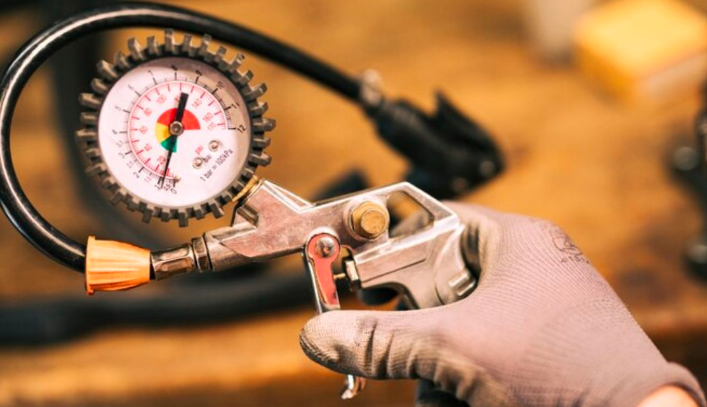Introduction
Vacumetros, commonly referred to as vacuum gauges or vacuummeters, are essential instruments used to measure pressure in vacuum systems. These devices play a critical role in various industries, including manufacturing, pharmaceuticals, and scientific research. This comprehensive guide will explore the different types of vacuum meters, their working principles, applications, and important considerations when choosing a vacuum meter for your needs.
What is a Vacuum Meter?
A vacuum meter is a device that measures the pressure in a vacuum system. It can indicate how much pressure is below atmospheric pressure. Vacuum meters are vital for processes requiring precise pressure control, such as those in vacuum chambers, semiconductor fabrication, and chemical processing. They ensure that systems operate within the required pressure limits, preventing equipment damage and ensuring product quality.
Importance of Vacuum Meters
Vacuum meters are crucial for:
- Quality Control: Ensuring that vacuum conditions are met in manufacturing processes.
- Safety: Preventing equipment failure by monitoring vacuum levels.
- Efficiency: Optimizing production processes through precise pressure management.
Types of Vacuum Meters
There are several types of vacuum meters, each designed for specific applications and pressure ranges. Here are the most common types:
1. Bourdon Tube Vacuum Gauge
The Bourdon tube vacuum gauge operates on the principle of elastic deformation. It consists of a coiled tube that straightens when pressure is applied. The movement is translated into a readable scale. These gauges are suitable for medium to high vacuum measurements and are often used in industrial applications.
Key Features:
- Suitable for a wide range of pressures
- Mechanical design with minimal maintenance
- Simple and cost-effective
2. Capacitance Manometer
Capacitance manometers measure pressure by detecting changes in capacitance. These devices use a flexible diaphragm that separates a vacuum from a reference pressure. The diaphragm’s movement affects the capacitance, which is converted into a pressure reading. Capacitance manometers are highly accurate and can measure pressures in high vacuum applications. They are widely used in semiconductor manufacturing and other precision industries.
Key Features:
- High accuracy and precision
- Suitable for high vacuum environments
- Requires calibration for best performance
3. Pirani Gauge
Pirani gauges use a heated wire that cools as the surrounding gas pressure decreases. The amount of cooling is proportional to the pressure in the vacuum chamber. These gauges are effective for low to medium vacuum measurements and are often used in research laboratories and industrial processes.
Key Features:
- Good for low-pressure applications
- Relatively inexpensive and simple to use
- Requires a stable electrical supply
4. Thermocouple Gauge
Thermocouple gauges measure the temperature of a thermocouple that changes with gas density in a vacuum. As the pressure decreases, the thermal conductivity of the gas changes, affecting the thermocouple’s temperature reading. These gauges are suitable for high vacuum applications and are known for their robustness.
Key Features:
- High durability and reliability
- Effective in harsh environments
- Suitable for a range of vacuum applications
Comparison Table of Vacumetros
| Type | Pressure Range | Accuracy | Application Area | Key Advantages |
| Bourdon Tube | Medium to High | Moderate | Industrial | Cost-effective, simple design |
| Capacitance Manometer | High Vacuum | High | Semiconductor Manufacturing | Excellent precision |
| Pirani Gauge | Low to Medium | Moderate | Research Laboratories | Low-cost, easy to use |
| Thermocouple Gauge | High Vacuum | Moderate | Chemical Processing | Robust and reliable |
Working Principle of Vacumetros
Vacuum meters operate on different principles depending on their type. Here is a brief overview of how the most common types work:
Bourdon Tube Vacuum Gauge
The Bourdon tube gauge works on the principle of elastic deformation. When pressure is applied, the coiled tube straightens out. This movement is translated to a pointer on a scale, providing a reading of the pressure. These gauges can measure a broad range of pressures and are relatively easy to use.
Capacitance Manometer
Capacitance manometers measure pressure by detecting changes in capacitance between two electrodes. The flexible diaphragm moves in response to changes in pressure, altering the capacitance. This change is then converted into a pressure reading. This type of gauge is highly accurate and ideal for measuring pressures in the high vacuum range.
Pirani Gauge
In Pirani gauges, a fine wire is heated by an electric current. As the pressure decreases, the gas surrounding the wire cools it down. The temperature change is directly related to the pressure, allowing for precise measurements. These gauges are particularly useful for low to medium vacuum environments.
Thermocouple Gauge
Thermocouple gauges measure the temperature of a thermocouple in a vacuum. The thermoelectric properties of the thermocouple change with variations in gas density, which in turn affects its temperature. This temperature variation is converted into a pressure reading, making thermocouple gauges suitable for high vacuum applications.
Applications of Vacumetros
Vacuum meters find applications in various industries, including:
1. Pharmaceuticals
In the pharmaceutical industry, vacuum meters are essential for drug manufacturing. Precise vacuum conditions are crucial during the processes of freeze-drying, granulation, and encapsulation. Vacuum meters help ensure that these processes operate within the specified parameters, resulting in higher product quality.
2. Semiconductors
The semiconductor industry relies heavily on vacuum technology. Vacuum meters are used to maintain the required vacuum levels during the fabrication of semiconductor devices. Accurate pressure measurements are essential to ensure optimal conditions for chemical vapor deposition (CVD) and plasma etching processes.
3. Food Packaging
Vacuum packaging helps extend the shelf life of food products by removing air and sealing the packaging tightly. Vacuum meters are used to monitor the vacuum levels in packaging machines, ensuring that food remains fresh and safe for consumption.
4. Research Laboratories
In research laboratories, vacuum meters are vital for experiments requiring controlled vacuum conditions. Whether studying gas dynamics or conducting chemical reactions under reduced pressure, researchers rely on accurate vacuum measurements to achieve reliable results.
5. Industrial Processes
Many industrial processes require vacuum systems, including chemical processing, distillation, and evaporation. Vacuum meters help monitor and control pressure levels, ensuring that processes run smoothly and efficiently.
Choosing the Right Vacumetros
When selecting a vacuum meter, consider the following factors:
1. Pressure Range
Determine the vacuum level you need to measure. Different meters have varying ranges, and choosing one that suits your specific application is crucial. Ensure that the meter can accurately measure the expected pressure range.
2. Accuracy
Look for a meter that provides the precision required for your application. Higher accuracy is especially important in industries such as pharmaceuticals and semiconductors, where small variations in pressure can lead to significant changes in product quality.
3. Environment
Ensure the meter is suitable for the environment in which it will operate. Factors like temperature, humidity, and exposure to chemicals can affect performance. Choose a vacuum meter designed to withstand the specific conditions of your application.
4. Calibration
Regular calibration is essential for maintaining accuracy. Consider how easily the meter can be calibrated and whether it comes with calibration certification. Some meters may require specialized equipment for calibration, which can add to maintenance costs.
5. Cost
While it’s important to invest in quality equipment, consider your budget when selecting a vacuum meter. Compare features and prices to find a meter that offers the best value for your specific needs.
6. Ease of Use
Look for a meter that is easy to install and operate. User-friendly interfaces and clear readings can make a significant difference, especially in fast-paced industrial environments.
7. Technical Support and Warranty
Check if the manufacturer offers technical support and warranty options. A good warranty can provide peace of mind, and accessible technical support can be invaluable for troubleshooting and maintenance.
Vacumetros Maintenance
Proper maintenance of vacuum meters ensures accuracy and longevity. Here are some maintenance tips:
Regular Calibration
Schedule regular calibration according to the manufacturer’s recommendations. Calibration helps ensure that your meter provides accurate readings, which is essential for quality control.
Cleaning
Keep the meter clean, especially the sensing element, to prevent contamination. Dirt or residues can affect the performance and accuracy of the device.
Inspection
Regularly check for signs of wear or damage. Look for leaks, cracks, or corrosion that could compromise the meter’s integrity.
Storage
Store vacuum meters in a clean, dry environment when not in use. Proper storage helps prevent damage and prolongs the life of the instrument.
Troubleshooting Common Issues
Here are some common issues that may arise with vacuum meters and tips for troubleshooting:
- Inconsistent Readings: Check for leaks in the vacuum system and ensure proper calibration.
- No Reading: Verify that the power supply is functioning and that the meter is properly connected.
- Physical Damage: Inspect the device for any signs of damage and consult the manufacturer for repairs or replacements.
Conclusion of Vacumetros
Vacuum meters are critical tools for measuring pressure in vacuum systems across various industries. Understanding the different types, their working principles, applications, and maintenance requirements can help you choose the right vacuum meter for your needs. Whether in pharmaceuticals, semiconductor manufacturing, or research laboratories, these devices play a vital role in ensuring optimal performance and quality control. By investing in a quality vacuum meter and adhering to maintenance best practices, you can enhance your operational efficiency and product quality.
FAQs About Vacuum Meters
What is a vacuum meter?
A vacuum meter measures the pressure in a vacuum system, indicating how much pressure is below atmospheric levels.
What are the types of vacuum meters?
Common types include Bourdon tube gauges, capacitance manometers, Pirani gauges, and thermocouple gauges.
How does a capacitance manometer work?
It measures pressure by detecting changes in capacitance due to the movement of a flexible diaphragm in response to pressure changes.
What applications use vacuum meters?
Vacuum meters are used in pharmaceuticals, semiconductor manufacturing, food packaging, research laboratories, and various industrial processes.
Why is calibration important for vacuum meters?
Calibration ensures that the vacuum meter provides accurate readings, which is crucial for quality control and process optimization.
How can I maintain my vacuum meter?
Regular calibration, cleaning, inspections, proper storage, and troubleshooting common issues are key to maintaining your vacuum meter.






